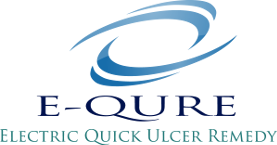The BST Device Therapy
The Unmet Needs in Chronic Wound Care
Chronic, non-healing wounds (or ulcers) are defined as those that fail to heal with "standard therapy" in an orderly and timely manner. In many cases, these wounds can last for years with no improvement. Such wounds are prevalent in people with diabetes and those with vascular problems (such as in arteries and veins). If untreated or unimproved they can cause clinical complications as well as life threatening conditions in severe cases. Consequently, the economic burden on the health sector is huge, and patients have a reduced quality of life. With the trend towards early hospital discharge, treatment of patients with chronic wounds becomes more common at home.
Therefore, medical practitioners need an alternative or adjunct therapy to existing treatment modalities to overcome the challenge of chronic wound treatment and healing. These unmet needs must be addressed by clinically approved home care modalities that are easy to use and cost effective.
E-QURE's BST Solution
- The BST Device is a clinically approved non-invasive, painless and easy to use electrotherapy.
- The BST Device is easily applied by the caregiver or patient in the hospital or clinic setting and in home care.
- The BST Device can accelerate healing with rapid wound closure from 45 to 60 days.
By enabling reduced hospitalization time and effective treatment at home, the BST Device offers an affordable and cost effective solution for the patient and the health system alike.
By causing wounds to respond to stimulating signals, the BST Device boosts the body’s naturally occurring electrical currents to stimulate the wound healing process of:
- Diabetic Wounds
- Vascular (Arterial or Venous) Leg Ulcers
- Pressure (Decubitus) Wounds
- Other Ulcers / Wounds, which are resistance to standard or more complex treatments
E-QURE's BST Device is the only electrotherapy which has been approved for the treatment of chronic wounds in a Randomized Placebo Controlled Trial – RCT.
Over the last 40 years, acceleration of wound healing by the use of electrotherapy has been documented by numerous clinical studies (over 550 peer reviewed medical reports). Indeed, the recent international pressure ulcer guidelines (EPUAP and NPUAP) rated electrotherapy as the only treatment for pressure ulcers (PUs) with the highest strength of evidence "A".
References
- Ricci, E., Afargan, M. The effect of stochastic electrical noise on hard-to-heal wounds. J Wound Care, 2010; 19 (3): 96-103.
- Ohry, A., Goren, O. The effects of BST electrostimulation on healing of pressure ulcers: results of a multi-center, double blind, randomized, placebo controlled study. EWMA J 2007; 7: oral abstract no. 66
- Houghton PE, Kinacaid CB, Lovell M, et al. Effect of electrical stimulation on chronic leg ulcer size and appearance. Phys Ther 2003;83:17-28
- Baker LL, Chambers R, DeMuth SK, Villar F. Effects of electrical stimulation on wound healing in patients with diabetic ulcers. Diabetes Care. 1997;20(3):405-412.
- Pamela E. et al., Electrical Stimulation Therapy Increases Rate of Healing of Pressure Ulcers in Community-Dwelling People With Spinal Cord Injury. Arch Phys Med Rehabil 2010; 91: 5, 669-832.
- Gardner, S.E., Frantz, R. A., Schmidt, F.L. Effect of electrical stimulation on chronic wound healing: a meta-analysis. Wound Rep Reg 1999; 7: 495-503.
- Kloth, L. Electrical stimulation for wound healing: a review of evidence from in vitro studies, animal experiments, and clinical trials. Int J Low Extreme Wounds 2005; 4: 1, 23-44.
- Weiss, D.S., Kirsner, R., Eaglstein, W.H. Electrical Stimulation and Wound Healing Arch Dermatol. 1990;126(2):222-225.
- NP UAP – EP UAP Guidelines for Pressure Ulcer Prevention and Treatment September 2009.
